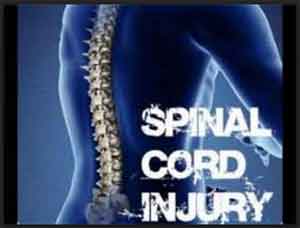- Home
- Editorial
- News
- Practice Guidelines
- Anesthesiology Guidelines
- Cancer Guidelines
- Cardiac Sciences Guidelines
- Critical Care Guidelines
- Dentistry Guidelines
- Dermatology Guidelines
- Diabetes and Endo Guidelines
- Diagnostics Guidelines
- ENT Guidelines
- Featured Practice Guidelines
- Gastroenterology Guidelines
- Geriatrics Guidelines
- Medicine Guidelines
- Nephrology Guidelines
- Neurosciences Guidelines
- Obs and Gynae Guidelines
- Ophthalmology Guidelines
- Orthopaedics Guidelines
- Paediatrics Guidelines
- Psychiatry Guidelines
- Pulmonology Guidelines
- Radiology Guidelines
- Surgery Guidelines
- Urology Guidelines
Scientists develop nanoparticle-antioxidants to treat strokes and spinal cord injuries

Spinal cord injuries, strokes, and cardiac arrest are caused by impacts, ruptured blood vessels, and tissue necrosis. When blood arteries contract leading to hypoxia which blocks the final link of the respiratory chain at the cellular level and creates an excessive number of so-called free radicals or active forms of oxygen. They, in turn, destroy cellular membranes and initiate a sequence of reactions that damage and destroy body cells and tissues. These complications damage the spinal cord still further and kill neurons, making the clinical picture even more complicated.The damage to nerve fibers, subsequent problems like the overproduction of free radicals and inflammation also pose a serious risk.An international science team headed by Maxim Abakumovhas has developed an innovative therapeutic complex based on multi-layer polymer nano-structures of superoxide dismutase (SOD). The new substance can be used to effectively rehabilitate patients after acute spinal injuries, strokes, and heart attacks.The research results were published in the Journal of Controlled Release.
The team of scientists from universities from Russia and the United States has managed to find a solution to the problem of the pathological formation of free radicals in cases of spinal injuries or strokes. An innovative therapeutic complex based on synthesized nanoparticle anti-oxidants will help to create an effective rehabilitation system.
A special ferment/anti-oxidant called superoxide dismutase (SOD1) acts as an effective agent which naturally absorbs free radicals. If delivered quickly enough to a damaged organ, this substance can mitigate the stressful oxidization process caused by an excessive number of free radicals and hence stop the process of tissues being destructed. However, this ferment remains unstable inside the bloodstream during intravenous injections; it disintegrates quickly and fails to neutralize free radicals on time.
«In order to create a stable therapeutic complex based on the SOD1 substance, we developed catalytically active forms of superoxide dismutase or nanozymes. For example, we obtained the SOD1 poly-ion complex for the first time in history. This complex features additional poly (amino acid) block co-polymers and PEG/poly-glutamine acid acting as a surface cover,» said Maxim Abakumov, project coauthor, Head of NUST MISIS' Biomedical Nanomaterials Laboratory.
This made it possible to obtain a porous polymer capsule measuring between 40-50 nanometers with a ferment molecule. This capsule acts as a reusable trap that not only absorbs but also neutralizes free radicals.
«We developed nanozymes with high fermentative activity levels that can preserve and protect SOD1 compounds in physiological conditions. This increases the circulation time of active SOD1 compounds inside the bloodstream, as compared to free SOD1 molecules. The substance's half-life increased from six to 60 minutes,» Abakumov added.
A research team headed by the University of North Carolina Professor Alexander Kabanov obtained encouraging laboratory results during the substance's experimental tests. A single intravenous nanozymes injection containing 5,000 equivalent SOD1 units per one kilogram of body weight sped up the restoration of kinetic functions in rats with moderate spinal cord injuries. Swelling/edema was reduced, the spinal cord contracted, and post-traumatic cysts formed.
The successful testing of the SOD1 ferment's nanozymes on rodents proves that the substance can effectively eliminate free radicals, reduce swelling as well as edema levels and more quickly rehabilitate patients after spinal cord injuries, strokes or cardiac arrest. Team members are set to launch pre-clinical tests in the near future.

Disclaimer: This site is primarily intended for healthcare professionals. Any content/information on this website does not replace the advice of medical and/or health professionals and should not be construed as medical/diagnostic advice/endorsement or prescription. Use of this site is subject to our terms of use, privacy policy, advertisement policy. © 2020 Minerva Medical Treatment Pvt Ltd